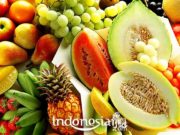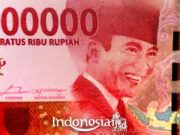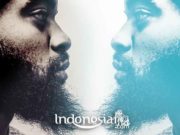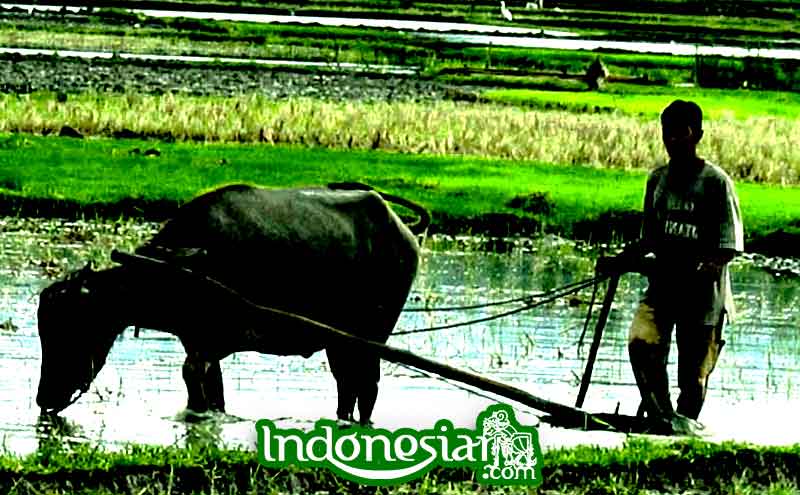The province of Papua is the most extensive province in Indonesia, at first the province was called Irian Jaya but is now divided into two, the eastern part is still called Papua but the western part adds the word west to West Papua. Now in this article we will discuss the culture found in Papua. How is the culture? Let us discuss below.
Papuan culture
As we know above, Papua is a fairly wide province, which is about 808,105 km². With a large enough area, of course there are many ethnic groups, languages, and religions in Papua, along with the list.
The composition of the population of Papua based on ethnicity consists of indigenous Papuans: 76.30%, immigrants: 23.70%, Javanese 8.38%, migrants from Sulawesi 3.67%, Bugis 3.19%, from Maluku 2.97 %, Malay 2.88%, Makassar 1.48%, Minahasa 0.77%, Batak 0.58%, Other Tribe 2.18%
Papua: 76.30% consists of the Huli, Bauzi, Muyu, Korowai, Dani, Amungme, Asmat, Arfak, Damal, Yali, etc.
Papua Regional Language
The following are some of the regional languages that the people of West Papua generally use
1. Biak is spoken in the Raja Ampat Islands.
2. Ambel language, this language is spoken in the Mayalibit Bay area.
3. Batanta language is spoken in the areas of Wailebet Village and Yenanas Village
4. Moi is spoken in the areas of Kampung Kalobo, Sakabu, and parts of Kampung Samate. The Moi language originates from the mainland west of the Bird’s Head region.
Indonesian and English are the official language choices for the Papuan people. The use of Indonesian in Papua is very strong in using the dialect to speak the accent of Indigenous Papuans, while the use of English in Papua is influenced by a neighboring country called Papua New Guinea, which uses English as the official language. The population in Papua has a percentage composition of the population with Protestant Christians 60.05%, 31.21% Islam, 8.36% Catholics, 0.09% Buddhists, 0.08% Hindus, and 0.01% others.
So, what is Papuan culture? Papuan culture has various forms of cultural products as below:
Traditional House – Culture of Papua
Traditional houses in Papua have different philosophies, the basic ingredients for making them are not the same and that is what makes Papua exotic. Here are some lists of Papuan traditional houses and their explanations.
Honai Traditional House
The Honai traditional house is a Papuan house where the Dani tribe lives. In general, Honai is inhabited by adult males. The name of this traditional house comes from the word “hun” which means man and “ai” means house. This honai is usually around valleys and mountains. The walls are made of wood, the roof is conical straw, at a glance like mushrooms.
There are no windows in this Honai house, it only has one door and the height of this house reaches 2.5 meters with a narrow room of about 5 meters because to withstand the cold temperatures in the mountains, in the middle there is a kind of circle that is used to make a fire to warm the body as well as lighting.
Ebai Traditional House
Ebai traditional house is taken from the word “ebe” which means woman and “ai” means house. This is because women are a place to live for life. Ebai is commonly used to carry out the educational process for girls, mothers will teach things to do just before the wedding.
This house is also a residence for mothers, daughters and sons. But boys who have grown up will be transferred to Honai.
Ebai houses are almost the same as honai, but ebay has a shorter and smaller size. This house is on the right or left side of the honai and the door is not parallel to the main door.
Wamai Traditional House
Wamai is a place that is used as a pen for livestock. Animals that are commonly used as livestock by Papuan tribes such as chickens, pigs, dogs and others.
The shape of this wamai is generally square but there are other shapes, it is very flexible depending on the size and number of types of animals they have.
Kariwari Traditional House
Kariwari is a traditional house inhabited by the Tobati-Enggros tribe who live on the shores of Lake Sentani, Jayapura. This house is specifically for men who are around 12 years old.
This house is used as a place to educate these children, he teaches them about life experiences and how to make a living, to be men who are responsible, brave and strong.
Other lessons learned were general in nature such as building boats, how to fight, making weapons, and carving.
Rumsram traditional house
Rumsram is a traditional Papuan house from the Biak Numfor tribe on the islands. This house was made for men. Like Kariwari, this house is used as a place to educate teenage boys in their search for life experiences, as well as how to become a strong and responsible man as the head of the family later.
Traditional Clothing – Culture of West Papua
Papuan traditional clothes have accessories in every outfit they wear, both men and women. There are several types of Papuan traditional clothing according to the wearer. For more details, see the review below:
Koteka, Traditional Men’s Clothing
In the indigenous tribes of Papua, we will be presented with the clothes they wear everyday which are very unique.
If most men wear neat and closed clothes and pants, this is different from the men in Papua. They do not wear clothes at all so that at a glance like naked. But it turns out that they wear traditional Papuan clothes known as koteka.
Tassel Skirts, Traditional Women’s Clothing
Papuan women use tassel skirts as their clothes. This tassel skirt is a type of women’s Papuan traditional clothing that is in the form of a skirt and is made of dried sago leaves and is worn to cover part of the lower body.
But in fact, this tassel skirt is also worn not only by women, but men also wear this outfit on certain occasions.
Sali, Traditional Clothing for Single Women
Papua has different traditional clothes for married women and single women. Single Papuan women wear special attractive clothes. This traditional clothing is known as Sali. This outfit is made from tree bark.
However, the color of the bark must be brown. Since Sali is only for women who are still single, those who are married are considered inappropriate to wear this outfit.
Yokai, Inland Traditional Clothing
Yokai are traditional clothes that only exist in West Papua and its surroundings and can only be seen in the interior of Papua.
This outfit is only for women who already have a family. Yokai is slightly reddish brown in color. In fact, this shirt is a symbol of the Papuan people who are close to nature, so these clothes cannot be traded.
Traditional Weapons – Culture of West Papua
The Papuan people also have several weapons that are used in their daily life. Sometimes these weapons are also used to complement their traditional clothes. The following are some of the weapons found in Papua:
Bow and Arrow
The main weapons of the Papuan people are the bow and arrow. This weapon helps people to catch prey and to fight against enemies. Like the spear, the point of the eye on this arrow was poisoned.
This weapon is made of 3 kinds of materials, namely wood, bamboo and sharp bones.
Spear
This spear is usually used by the people of Papua to hunt animals from a distance. This weapon is made of wood and stone with sharp edges, some even use bones as spearheads. But along with the times, the spearhead is now made of metal.
Usually this spearhead is given a very deadly poison to paralyze the victim or prey.
Dagger
This dagger only exists in Papua. The basic ingredient for making this knife is cassowary bone, so this weapon is very dangerous. How to use it is different, this knife is smeared with poison before it is used for hunting. This dagger looks beautiful with the cassowary feathers on the knife handle.
Ax
The ax is the weapon of the Papuan people used for farming and to open roads to forests. This ax is different from most axes, this ax is made from the basic material of rattan and the ax blade is made of very sharp stone.
Badik Compilation Papua
Badik is the traditional weapon of the Bugis people in Makassar, which became the traditional weapon of Papua after the Papuans got to know the outside world. This badik is short like a knife, but still has its own uniqueness. This weapon has existed since the Kingdom of Sulawesi.
Regional Arts – Papuan Culture
The arts in Papua include dances and regional musical instruments originating from Papua. The following is a list of some of the Papuan regional arts:
Papuan Traditional Dance
In Papua, there are various traditional dances. Various traditional Papuans, of course, come from several regions within the Papua region. Some of these traditional dances are the Musyoh Dance which is a sacred dance on the island of Papua which is used to drive away unsettled spirits, the Sajojo Dance which is an entertainment culture that can be played by male and female dancers. Yospan Dance which is a dance for entertainment in an event, Welcome Dance which is a welcome dance in starting an event in the Papua area, War Dance which tells about the heroism and courage of the Papuan people. Suanggi Dance is a dance that tells of a husband who is left dead by his wife who became a victim of events, Fela Mandu Dance Central Sentani Currently, the Fela Mandu dance is a social dance that is entertainment in nature., Entol Dance Coastal Merauke beach depicts victory after waging war between tribes. Fayaryar Kar Baryan Dance Tells about someone cutting sago, Dow Mamun Dance originating from the island of Biak Describes war and victory, the Awaijale Rilejale Dance of the Sentani Tribe Describes the natural beauty of Lake Sentani at dusk, the Bet Pok Mbui dance from Merauke which is a dance consisting of a group of men and women in the afternoon or evening, looking for sago, pertu long njukan 2-3 hours, Falabea Dance which is a dance from the Sentani Tribe which is a traditional dance performed in the field in the evening or at night.
West Papua Musical Instruments
The following is a list of traditional musical instruments found in West Papua
Tifa
Tifa is a musical instrument from Papua which has the same shape as a drum. In fact, the technique for playing this one musical instrument is similar. This tifa is made from a stick of wood, then, on the side of the Tifa, it is covered with dried deerskin. It’s what makes a beautiful sound.
Yi
This musical instrument in some areas is known as the flute. But the shape of the flute is different from the shape of the flute from other regions. This musical instrument is used by the Papuan people as an accompaniment to various kinds of regional dances. Apart from that, Yi was also often used to gather residents.
Triton
The triton is a musical instrument made of clam shells. The name of this musical instrument comes from the name of an island which has a natural beauty that is much more beautiful than Raja Ampat.
This musical instrument includes a wind instrument
Pikon / Pikonane / Jewish Harp Nowadays, Pikon is more often played by the dani tribe who live in the interior. In everyday life, this Pikon is played by men.
Paar and Kee
Paar and Kee are like a pair of letters and stamps that cannot be separated. Paar is made from pumpkin and Kee is made from cassowary bones.
Chrombi / Kerombi
Kerombi is a Papuan musical instrument that originates from the Tehit Tribe, Papua. This musical instrument is made of bamboo and is commonly used for dances in traditional ceremonies performed by the surrounding community.
Krombi is played by beating.
Fuu
Fuu is a Papuan musical instrument made of wood and bamboo. This musical instrument is useful for accompanying a certain dance. In addition, this musical instrument is also used to gather residents from certain tribes. So, are you interested in studying Indonesian culture originating from Papua? Come on. get other interesting articles only from Indonesiar.com.































